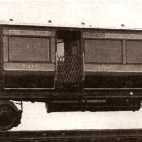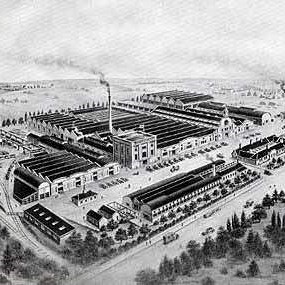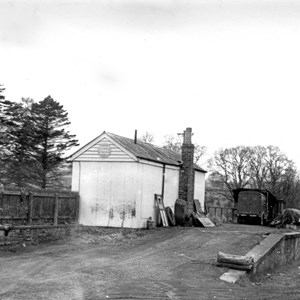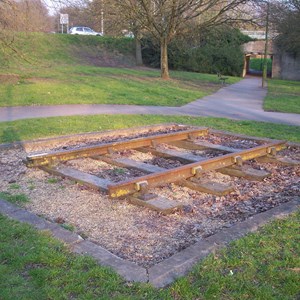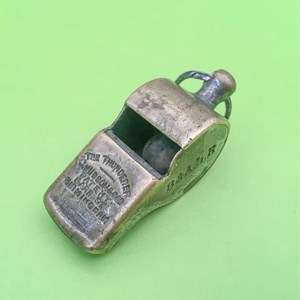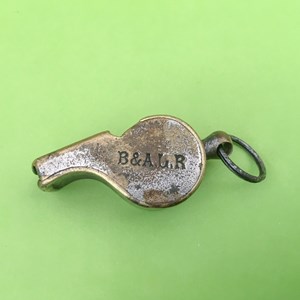Basingstoke Railway
Basingstoke & Alton Light Railway
The Basingstoke & Alton Light Railway (BALR) was given Royal assent in 1896 and was opened on 1st June 1901. This was one of a number of light railways built in the UK, perhaps the most well known being the Kent & East Sussex Railway, formerly run by Colonel Stephens. In this case, the line was proposed and built by the London and South Western Railway (LSWR) using a Light Railway Order, allowing it to build the line to a lower standard than normally required for passenger-carrying railways. The Light Railway Order was the government's solution to the farming recession of the day and the bill had only been passed in spring of 1896, so the LSWR were not slow to take advantage of it.
The resulting 12½ mile railway was very sinuous, slow and did not pass very near the villages after which the halts were named. Stations were provided for Cliddesden, Herriard, Bentworth & Lasham and Alton Park. They provided a new Signal Box where the line joined the Mid-Hants Railway at Butts Junction, and widened the embankments and cuttings between Butts Junction and Alton Station so that they could double the track. This work included replacing the bridge over Butts Road and widening the bridges over Whitedown Lane, Lower Turk Street and Paper Mill Lane. The latter railway bridge gave access to a new platform 3 at Alton station that was created by increasing the width of the embankment and widening platform 2 to make it into an island platform. It would appear that the surviving brick waiting room on platform 2 originally had doors facing the track - these were replaced with windows and a new door was made at the south end of the building (now the entrance to the shop on platform 3). It is also likely that the toilet on platforms 2 and 3 was also built at this time. The brick toilet building was later demolished by British Rail, but has since been replaced by the Mid-Hants Railway with a wooden structure.
The line provided Thornycroft (in Basingstoke) with railway access to transport their vans and lorries, carried farming produce, later served a BP depot and offered a train service for the public. The LSWR was keen on steam railmotors (railcars) as a means of providing low-cost passenger services for branch lines, so in 1903 they introduced two new railmotors as part of a trial for these units (see picture above). However, much to the annoyance of LSWR, they did not prove powerful enough and were withdrawn the following year. The service was continued with tank engines and carriages, taking 45 minutes from Basingstoke to Alton. The initial service was three trains a day, soon increasing to 4, allowing for goods wagons to be attached as required. According to the timetable, the determined traveller could leave Waterloo at 09.00 to change at Basingstoke to catch the 10.35 train, arriving at Alton at 11.19 and return to London via Aldershot to arrive back at Waterloo at 13.00.
The line became famous for its part in the 1928 film called 'The Wrecker' (watch on YouTube) in which a train was crashed in Lasham for the film. The line was also used in the making of the 1937 film 'Oh, Mr. Porter!' (watch on YouTube) starring comedian Will Hay and renaming Cliddesden station as 'Buggleskelly'.
Despite its double claim to fame, the reality was that the line was not making money. The line first closed in 1916 and the track was lifted in 1917 (apart from the sidings for Thornycroft and Treloar's school & hospital) and sent to France to help with the war effort. After the end of the first world war local people petitioned for the reinstatement of the line and would not take no for an answer, leading to the issue dragging on for so long that became the problem of the newly formed Southern Railway (SR) in 1923. SR applied to parliament to close the line, but a protest meeting was held in Basingstoke's Town Hall on 10th January 1923 to oppose the bill. Despite the objections, the House of Commons passed the bill, but a later House of Lords Select Committee hearing found in favour of reinstatement, so SR reluctantly relaid the track with trains commencing on 18th August 1924. However, the reinstatement was short lived and the line was once again closed in 1936, but with the track staying in situ. This allowed the filming of Oh, Mr. Porter!, but soon after the track was once again lifted apart from the sidings. This time it was not to be revived, so ended the railway's short existence.
In 2019, Pete Owen has provided with photos of a nickel-plated brass escargot type pea whistle made by J.Hudson & Co of Birmingham. The side in inscribed "B&ALR", so it is highly likely that this was a whistle issued to railway staff on this line.
For further reading:
The Basingstoke and Alton Light Railway by Martin Dean, Kevin Robertson & Roger Simmonds, Crusader Press, ISBN 0 9534197 0 3
Branch Lines to Alton by Vic Mitchel and Keith Smith, Middletn Press, ISBN 0 906520 11 8
The Basingstoke & Alton Light Railway by Edward Griffith, Kingfisher Railway Productions 1982, (No ISBN number)
The photographs were found on the Internet and the copyright belongs to the respective photographers. Whilst this website and Friends of Alton Station is a not for profit organisation, if any of the copyright holders has any objection to our using their photographs please let us know and we will remove them.
Find out more about the history surrounding Alton's railways on the following pages:
HISTORY Page Index
Introduction: The Railway Comes to Alton
Footbridge History
The Ladies of Alton
Mid-Hants Railway
Basingstoke & Alton Light Railway
Meon Valley Railway
Longmoor Military Railway
Bentley & Bordon Light Railway
Click on these links, or use the drop-down menu above to navigate between the pages.
